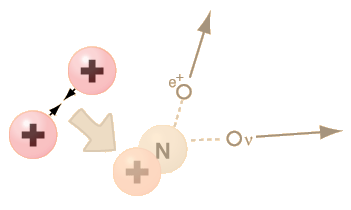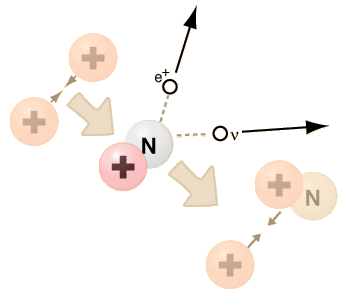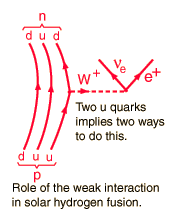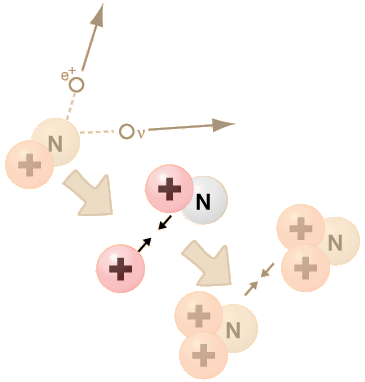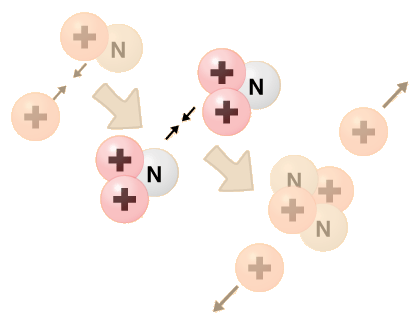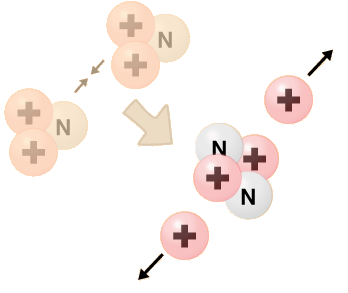Proton-Proton Fusion
This is the nuclear fusion process which fuels the Sun and other stars which have core temperatures less than 15 million Kelvin. A reaction cycle yields about 25 MeV of energy.
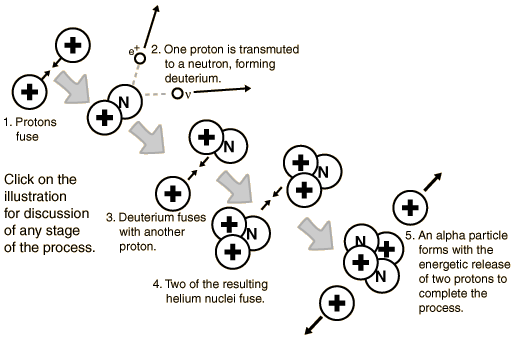
| Some details of the nuclear reactions involved |
| HyperPhysics***** Astrophysics | R Nave |



